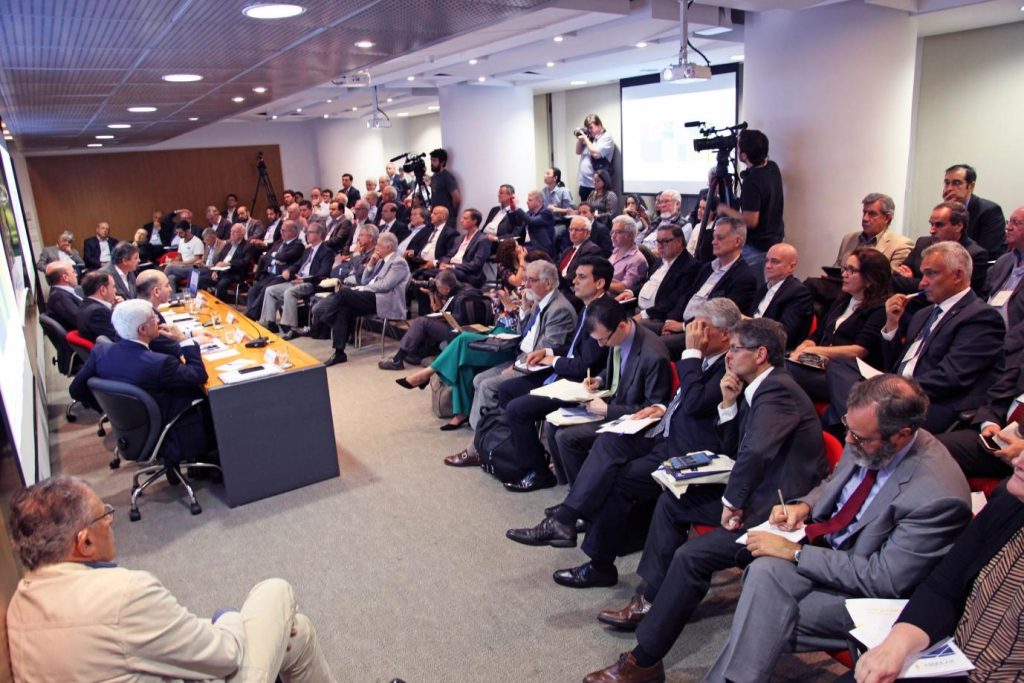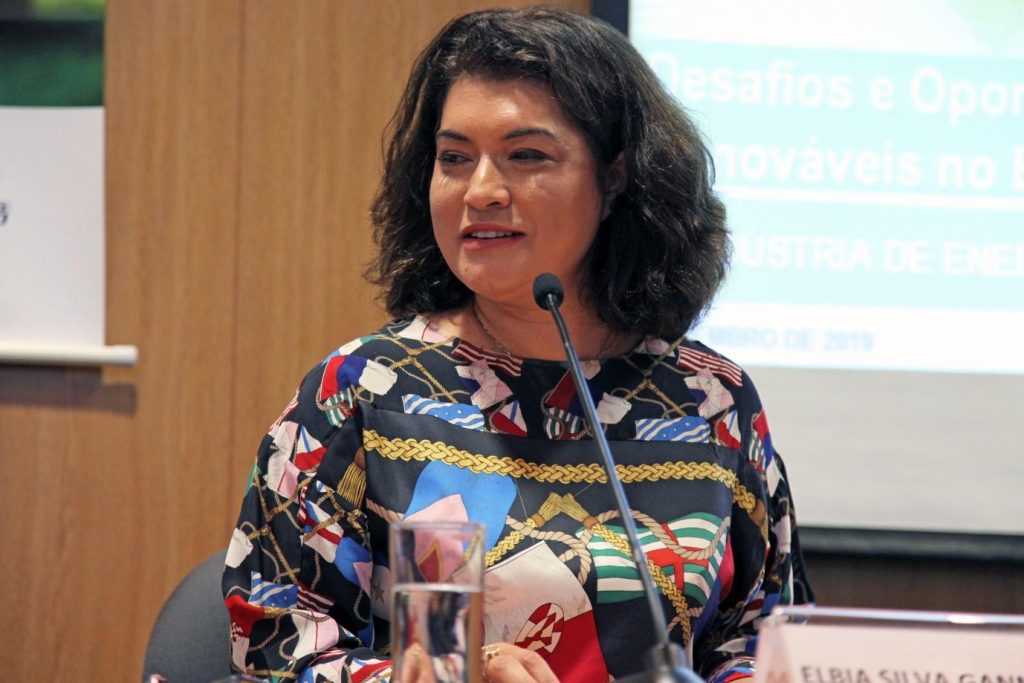Challenges and Opportunities for Renewable Energy in Brazil
With the vast potential for energy production from wind, sun, and biomass, Brazil is in a favorable position to be one of the world leaders (and an example) of the ongoing energy matrix transition on the planet. However, it needs to definitively leave behind the uncertainties that marked the energy sector in recent years and decades – such as the lack of clarity about the roles of the government and the private sector, unpredictability, and legal uncertainty – and integrate the various available energy sources, including the hydroelectric, oil & gas, and ethanol sectors.
That was the main conclusion of the “Challenges and Opportunities for Renewable Energy in Brazil” debate, which brought together a dozen representatives from the government and private sector, as well as specialists, in a full day of debates at the Fundação FHC.
“The track record of changing the energy matrix is slow, but it is accelerating rapidly due to climate change. Domestic and foreign investments will increasingly seek alternatives that result in less carbon dioxide (CO2) emissions. Brazil meets all the conditions to be one of the biggest beneficiaries of such investments.”
Mr. Giovani Machado, director of the Energy Research Company (EPE), a specialist in energy sector regulation.
“The Brazilian electric matrix is in transition: the share of ‘new renewables’ (mainly wind and solar) is increasing, while large hydroelectric projects with large reservoirs no longer have the priority they carried in the past.”
Mr. Hélvio Neves Guerra, assistant secretary of the Energy Planning and Development Department of the Ministry of Mines and Energy (MME).
“There are few location alternatives for building large hydroelectric plants, especially in the Amazon. The environmental and social argument is winning the public debate, and it is essential to develop viable alternatives.”
Mr. Jerson Kelman, former president of the Water and Waste Management Company of the State of São Paulo (SABESP), the Brazilian Electricity Regulatory Agency (ANEEL), and The Brazilian Water Agency (ANA).
“In the near future, the world will run on electric and renewables. With technological modernization, miniaturization, and digitalization, consumers will have more control over their consumption, and will be able to produce energy at home and sell the surplus.”
Mr. David Zylberstajn, former director of the Brazilian Petroleum, Natural Gas and Biofuels Agency (ANP).
The Ten-Year Energy Expansion Plan (PDE 2019-2029) – prepared by the Ministry of Mines and Energy (MME) after consultation with all stakeholders, and in the final stage of public consultation – foresees investments of 456 billion BRL in the generation and transmission of electrical energy (does not include distribution) in the beginning decade. The oil, gas, and biofuel sector should receive 1.9 trillion BRL in investments. According to data presented by Mr. Hélvio Neves Guerra (MME Secretariat for Energy Planning and Development), 44% of Brazil’s current energy matrix is already renewable (mostly due to past investments in large hydroelectric plants), and should reach 48% in 2029. Worldwide, this percentage is currently only 14%.
“Brazil already has one of the cleanest energy matrices in the world. However, to make the sector more attractive for investments and guarantee the sustainability of the energy supply, the main challenges are regulatory and legal stability, inviolability of contracts, governance, transparency, and synergy,” said Mr. Guerra.
“Brazil has oil and gas (production in the pre-salt layer will continue to grow in the coming years and decades), rivers, wind, sun, and biomass. Production from all of these sources will increase in the coming years, including that of the hydroelectric sector (depending on the rains), but the emphasis will be on the wind, solar, and biomass sectors,” said Mr. Giovani Machado from the Energy Research Company (EPE). “It is essential to structure the system in order to enhance the complementarity of the various energy sources and contribute to reducing our environmental footprint.”

Intelligent equalization of the electrical system
“Is it possible to have a future with renewables, such as wind and solar? Yes, but the hydroelectric and thermoelectric plants must serve as a guarantee (for the stability of the electrical system),” said Professor Jerson Kelman (ex-SABESP, ANEEL, and ANA), from the Alberto Luiz Coimbra Institute for Graduate Studies and Research of the Federal University of Rio de Janeiro (COPPE-UFRJ).
“There is no way to recover the country from a blackout (or a major energy crisis) without the help of hydroelectric and thermoelectric plants, but the wind and solar sectors can contribute more and more. Hence the need to make an intelligent equalization of the entire system,” said Mr. Flávio Antônio Neiva, president of the Brazilian Association of Electricity Generating Companies (ABRAGE).
Neiva presented 5 topics on the agenda defended by ABRAGE:
1. integrate rapidly expanding renewable sources (wind, solar, and biomass);
2. guarantee balance between supply and demand in the short-, medium-, and long-term;
3. ensure a steady supply of gas (gas production in the pre-salt layer should grow significantly);
4. reduce the tax burden on the electricity sector;
5. make the most of the disruption caused by the arrival of electric cars.
International oil supply will exceed demand
“Oil is still a necessary evil, and Brazil has good reserves, but, contrary to what was imagined, it is not a shock of supply, but of demand that will lead to its replacement by other sources of energy. More and more countries, especially the more developed ones, are setting deadlines to abolish the use of vehicles powered by gasoline or diesel. Brazil cannot be left behind,” said Mr. David Zylbersztajn, chairman of the Board of Directors of Light S.A.
Diversity of energy sources should boost the free market
According to Mr. Filipe Domingues, CEO of EDP Renováveis Brasil, with the expansion of the supply of energy from different sources, especially wind, the regulated market tends to lose importance to the free market, in which large consumers can choose from whom they buy energy and the trading is done freely and bilaterally, with less state interference. “One existing obstacle is that the large consumer still has little interest in long-term contracts: about 80% of free market contracts (ACL) have a term of fewer than six years,” he said. The longer the contract, the lower and less volatile prices tend to be.
Brazil is already among the ‘top 10’ in wind energy
During the event, a dynamic graph was presented with the ranking of the largest wind energy producers in the world from 1985 to 2018: until 2010, Brazil simply did not appear on the list, but since then it began a rapid rise and, in 2018, occupied the 7th position, just behind Spain. China is easily in the lead, followed by the USA and Germany.
“Brazil has the best wind in the world, and in the last decade, we managed to develop the entire production chain right here. There are hundreds of suppliers that enable a strong national wind industry (without any imposition from the authorities),” said Ms. Elbia Gannoum, president of the Brazilian Wind Energy Association.

Social impact in the Northeast
“In the Brazilian electric sector, there is room for everyone, but wind power has grown the fastest in the last ten years, with installed capacity growth of around 2 gigawatts (GW) per year, 15 billion BRL in investment and 30 thousand jobs per GW,” she said. According to the sector representative, the wind sector has had a significant social impact in the Northeast of the country, whether through renting land for tower installation (1,000 BRL per wind turbine per month), guaranteeing their owners income for up to 25 years on average, or jobs created locally.
She acknowledged that wind farms have environmental impacts, such as noise and the death of birds and bats. “Every economic activity has consequences, but wind has the least impact. Environmental legislation is strict. It prohibits, for example, towers in the middle of migratory routes,” she said.
Fifteen years ago, wind energy production costs were up to six times higher than those in the hydroelectric sector, but today they are lower. To maintain this cost-reduction course, “it is essential that there is no room for (new) subsidies in any area.” According to the sector spokesperson, the next frontier for the wind sector will be offshore plants (installed at sea).
Mr. Filipe Domingues (EDP Renováveis Brasil) defended hybrid wind-solar parks as a way to reduce the generation variability at different times of the day and night, infrastructure, and human resources that are common to both activities.
Solar power ’empowers’ consumers
Although Brazil is lagging behind – the solar energy sector accounts for just over 1% of the Brazilian energy matrix – Zylbersztajn (Light S.A.) is betting on its rapid growth. “Since 2009, the cost of producing energy from the sun has fallen by 90%. Soon, it will be more accessible than wind and hydroelectric power,” he said.
“We have not yet appeared in the rankings, but that will change. China leads both in production and consumption, but there’s still time, and there is room for us to move forward. The main challenge is to develop the production chain in Brazil,” said Mr. Rodrigo Sauaia, co-chairman of the Brazilian Photovoltaic Solar Energy Association (ABSOLAR). He pointed out that there is no need for water or the generation of noise, gases, or polluting liquids to produce energy from sunlight.
With the popularization of solar panels made in China, it will be possible to produce energy in homes, residential and commercial buildings, schools, etc. and, through smart grid technology, sell the surplus to distribution companies. When generating energy near the point of consumption, it is unnecessary to build transmission lines, and it reduces loss and waste.
“Consumers are going to switch to solar, one way or another. Regulation can help to ensure that this transition is made safely and at the right time,” said Mr. Wilson Ferreira Junior, president of Eletrobras.
“The transition we are experiencing today is not just about diversifying energy sources. It also addresses technological innovations such as artificial intelligence, blockchain technology, and the Internet of Things. In the medium-term, the result will be an increasingly ’empowered’ consumer,” said Mr. Giovani Machado (EPE).
The potential of biomass
Mr. Machado recalled that the RenovaBio program (launched in December 2017) set decarbonization targets for the fuel market and created the conditions for a “new virtuous cycle for energy production from biomass in Brazil.” He argued that the sector should go beyond the already known ethanol (used in almost 70% of Brazil’s car fleet) and evolve to scale production of biodiesel, biogas, and aviation biokerosene. Biomethane (renewable natural gas, or RNG), produced from agricultural residues, can help reduce the environmental footprint of agribusiness. “The way to move forward is to put the various technologies in competition with one another, and may the best one wins,” he suggested.
“Brazil has one of the greatest potentials for biomass and one of the largest biodiversities on the planet. It can lead the search for new uses for the co-generation of biomass energy, which already accounts for about 9% of the country’s energy matrix,” said Mr. Antonio Simões Rodrigues, Raízen’s executive director.
Mr. Newton José Leme Duarte, president of the Association of the Energy Cogeneration Industry, defended the reduction in the number of distributors in the middle of the production chain as a way to cut costs and produce more energy from biomass near the consumption areas.
“Consolidating a low carbon matrix is not a choice, but a requirement for the 21st century. With its availability of renewable resources, Brazil has everything to evolve in this direction. However, the country needs to anticipate what is happening in the rest of the world and innovate continuously,” added Brazil’s former President Fernando Henrique Cardoso.
Otávio Dias is a journalist who specializes in politics and international affairs. A former Folha de S. Paulo correspondent in London and editor of the news website estadao.com.br, he is currently the content editor at the Fernando Henrique Cardoso Foundation.
Portuguese to English translation by Melissa Harkin & Todd Harkin (Harkin Translations)




